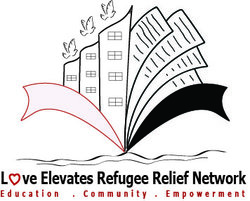Is Peace Possible After Violence?

Somi is a student at Webster Athens. She wrote this article for her Advanced English Composition class. We admire her determination to learn, refine her English language and composition skills, and that she seeks to explore important world issues in her writing. This essay was originally published on the author’s own blog and is re-published here with permission. You can visit her blog and read more of her essays at https://sominem12.wixsite.com/myarticles.
In recent centuries despite of technological progress, we have still witnessed mass killings, violent wars, massacres and terrorist activities around the world. Victims of violence may belong to different groups in the community. Whenever tensions and disagreements between aggressive groups are persistent and violent, they usually lead to genocide.
Genocide is defined as “the attempt to eliminate a whole group of people- a racial, ethnic, religious, or political group- which can involve varied means, ranging from murder to making it impossible for the group to reproduce”(Staub 576). Historical research and data on this phenomenon show a large number of violent killings in the 20st and 21st century; such as the massacre in Darfur, the mass killings in Argentina, the Holocaust, the genocide of the Armenians in Turkey, the Sri Lankan civil war, and the ongoing and historic violence between Palestine and Israel etc. (576, 577). The rooting out of this violence may help us to better apprehend this issue. On the other hand, we can look at the space created after violence and find the right solution for sustainable peace in such societies. Because genocide leads to human suffering, it must be approached seriously and dynamically. In fact, stopping group conflict and bringing reconciliation maybe achieved through healing processes, constructive ideologies and educational activities.
In order to get a clear understanding of genocide and its destructive effects, we need to dive deep in to the factors that lead to it. One main reason for great violence between groups is difficult life conditions in a society, “among the important forms of these conditions are economic decline, political disorganization, and great and rapid changes in society” (staub 577). Another major factor contributing to group violence is cultural characteristics, because it can lead to one group turning against another.” One of the especially important characteristics is a history of devaluation of a subgroup of a society. This makes it probable that in difficult times, the devalued group will be selected as a scapegoat and ideological enemy” (577). Further, stable group conflict is an important reason behind genocide. Such conflicts usually evolve regarding land, ethnic differences, identity threats and war for survival (577). For example, “while there was no actual conflict between Germans and Jews in Germany, the Nazi leaders presented Jews as a mortal threat to Germans, and many Germans apparently experienced them as such” (577). Finally, unpleasant psychological wounds can also cause people to be vulnerable, so it is considered as another factor in the escalation of violence. “Past victimization can become a group’s “chosen trauma” an important component of its identity, shaping perceptions of and responses to events” (578). Overall, it is critical to examine the factors that cause intonation violence.
The first recommendation toward bringing reconciliation among a nation is healing processes. Specifically, “healing by survivors, as well as by perpetrators and bystanders, can improve the quality of their lives and make future violence less likely”(581). Sharing past experiences and listening to each other’s conversations in the group can help the process of treating victims of violence. Moreover, memorials are valuable, but at times victims will preserve past negative memories, so the memorial should focus on the prospect of a positive common future. In this way, after the violence is stopped, the motive and hope for compromise and peace are given to the victims. In addition, some people who have been victims of violence have a sense of commitment to other people and help them voluntarily. This phenomenon is called “altruism born of suffering” (581). You can also see that at the group level. Research around this topic shows that a large number of such empathy, including the American Jewish effort to stop violence in Darfur (581). In a similar sense, Andrea Mathews in the article “Recovering from the Victim Identity” presents that, Victims of violence generally think that they are just the ones who live in the worst conditions. All of them just look at their suffering and this thinking becomes a belief in them. Therefore, in the treatment of victims, they should be helped to abandon this belief and listen to the rest of the people who have a common pain. In general, healing processes are extremely important for preventing genocide.
The second crucial step to be taken is creating constructive ideologies. This means that we must have what Staub calls “committed leadership” and “dialogue at all level of society” (582). In other words, responding to difficult living conditions requires a committed leadership. A committed leader in a time of recession can save society from constraint and create appropriate prospects for a positive society with suitable policies. Further, according to Staub, visions and dreams must be followed by all societies (582), which means that creating a peaceful coexistence with constructive dialogue in the community and, in particular, the formation of some specific organizations to promote this attitude can help prevent long-term violence. An example of this is “Macedonia, where there was fighting between the government and the Albanian minority in 2001, a new constitution both provided a positive vision and led to practices that addressed at least some Albanian grievances” (582). It’s obvious then that in order to prevent group conflict, we need to create constructive beliefs.
A third major measure towards reconciliation between groups with conflict is bringing education. Specifically, we need a set of educational information for victims of violence that can transfer the principles of the roots of group violence and ways to prevent the rise of slaughter, as well as the areas of reconciliation through education. All forms of training and communicating information can be useful; one in particular is the radio. For example, according to Staub, in an experimental study in Rwanda at the end of the first year, radio education had many positive outcomes. The groups that listened to the radio were more aware of the violent damage. There was more empathy with different groups and as a result, these people were more involved in reconciliation between the groups. As Staub states, “The workshops and the educational radio programs are examples of public education, which can create awareness of instigating conditions, destructive leadership, and the progression of mass violence and then generate resistance to them. It can move people to constructive action” (582). Generally, we need to develop public education and interventions such as organizing local workshops.
In conclusion, mass killing, group violence and genocide will not be ended except by a change in attitude from both sides of the adversary. This change of view is based on respect, care and constructive communication between the groups. Real peace will not be available while violent people insist on their ethnic and racial prejudices and seek only their interests. Tension and conflict can be avoided by examining the roots and informing people and their leaders, but it requires a group effort and the whole community’s cooperation. On the other hand, preventive and peaceful means are a good way to create peace after violence. Meanwhile, the role of peacekeeping institutions is crucial for promoting reconciliation. Hoping for a day to end all other acts of violence and killings, and for societies to live free in peace.
Works Cited
Mathews, Andrea. “Recovering From the Victim Identity: Unwinding the Knotty Threads of
Belief.” Traversing the Inner Terrain. Mar 04, 2011.
Staub, Ervin. “Building a Peaceful Society: Origins, Prevention, and Reconciliation after
Genocide and Other Group Violence.” American Psychological Association . October 2013.

